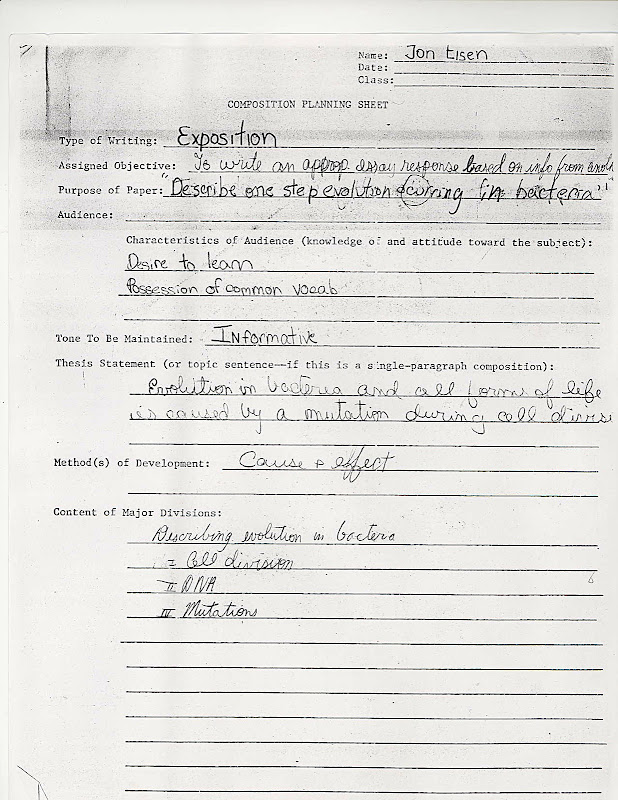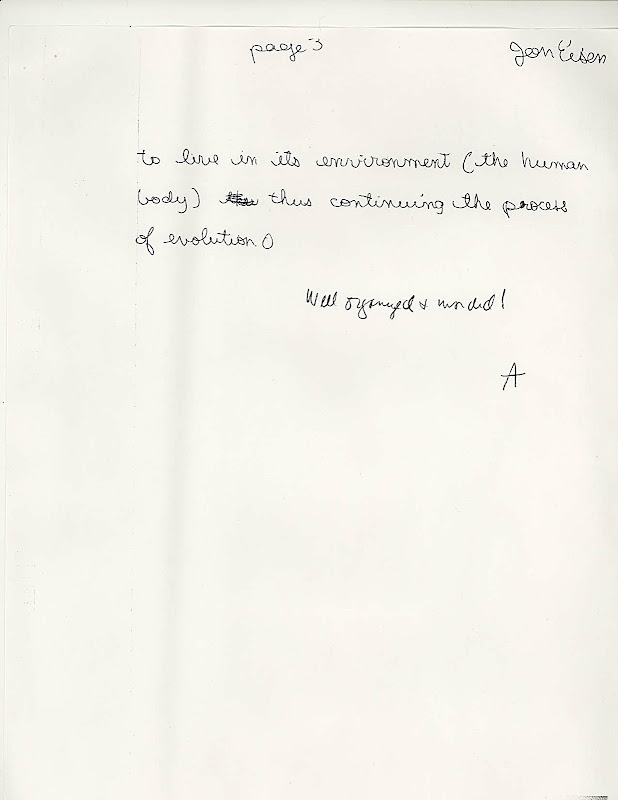| Ruedi Aebersold (ETH Zuerich, Zuerich, Switzerland) | Steve Kay (Univ. California, USA) |
| Leif Andersson (Univ. Uppsala, Uppsala, Sweden) | Brian Kennedy (Washington Univ., Seattle, USA) |
| Siv Andersson (Univ. Uppsala, Uppsala, Sweden) | Daniel Kevles (Yale Univ., New Haven, USA) |
| Hiroyuki Araki (NIG, Mishima, Japan) | Amar Klar (NCI, Frederick, USA) |
| Ana Barahona (UNAM, Tialpan, Mexico) | Narry Kim (Seoul National Univ., Seoul, South Korea) |
| Cori Bargmann (Columbia University, New York, USA) | Arne Klungland (Univ. Oslo, Oslo, Norway) |
| Nick Barton (Univ. Edinburgh, Edinburgh, Britain) | Bartha Knoppers (Univ. Montreal, Montreal, Canada) |
| David Baulcombe (Sainsbury Laboratory, Norwich, Britain) | Daphne Koller (Stanford Univ., Standford, USA) |
| Stephan Beck (UCL, London, UK) | Arash Komeili (Univ. of California, Berkeley, USA) |
| Hugo Bellen (Baylor College of Med., Houston, USA) | Charalambos Kyriacou (Univ. Leicester, Leicester, Britain) |
| Jeffrey Bennetzen (Univ. Georgia, Athens, USA) | Ruth Lehmann (Skirball Institute, NYU, New York, USA) |
| Shelley Berger (Wistar Inst., Philadelphia, USA) | Ottoline Leyser (Univ. York, York, UK) |
| Casey Bergman (Univ. Manchester, Manchester, UK) | Thomas Lindahl (CRUK, South Mimms, UK) |
| Anton Berns (nki, Amsterdam, The Netherlands) | Klaus Lindpainter (Hoffmann-LaRoche, Basel, Switzerland) |
| Bruce Beutler (Scripps Res. Inst., La Jolla, USA) | Edison Liu (Genome Institute, Singapore) |
| Ewan Birney (EMBL, Hinxton, UK) | John M. Logsdon (Univ. Iowa, USA) |
| Maria Blasco (CNIO, Madrid, Spain) | Trudy Mackay (NCSU, Raleigh, USA) |
| D.I. Boomsma (Netherlands Twin Register, Amsterdam, Netherlands) | Partha P. Majumder (Indian Statistical Institute, Kolkata, India) |
| Paola Bonfante (CNR, Torino, Italy) | Marjori Matzke (Gregor Mendel Institute, Vienna, Austria) |
| Nancy Bonini (Univ. Penn., Philadelphia, USA) | Gunter Meister, MPI, Martinsried, Germany) |
| Peer Bork (EMBL, Heidelberg, Germany) | Gilean McVean (Univ. Oxford, Oxford, UK) |
| Dan Bradley (Trinity College Dublin, Dublin, Ireland) | David A. Micklos (Cold Spring Harbor, New York, USA) |
| Steve Briggs (Univ. California, San Diego, USA) | Andrew Moore (EMBO, Heidelberg, Germany) |
| Maja Bucan (Pennsylvania Univ. Philadelphia, USA) | Joe Nadeau (CWR Univ., Cleveland, USA) |
| Margaret Buckingham (Institut Pasteur, Paris, France) | Wolfgang Nellen (Univ. Kassel, Kassel, Germany) |
| Edward Buckler (Cornwell Univ., Ithaka, USA) | Laura Niedernhofer (Univ. Pittsburg, Pittsburg, USA) |
| Jeremy Burdon (CSIRO-Plant Industry, Canberra, Australia) | Jens Nielsen (Biocentrum, Lyngby, Denmark) |
| A. Bernardo Carvalho (Rio de Janeiro Univ., Brazil) | Howard Ochman (Uni. Arizona, Tucson, USA) |
| Aravinda Chakravarti (Johns Hopkins Univ., Baltimore, USA) | Peter Oefner (Univ. Regensburg, Regensburg, Germany) |
| Deborah Charlesworth (Univ. Edinburgh, Edinburgh, Britain) | Steve Oliver (Cambridge Univ., Cambridge, UK) |
| Judy Cho (Yale Univ., New Haven, USA) | Allen Orr (Univ. Rochester, Rochester, USA) |
| George Church (Harvard Medical School, Boston, USA) | Terry Orr-Weaver (MIT / Whitehead, Cambridge, USA) |
| Andy Clark (Cornwell Univ., Ithaka, USA) | Elaine Ostrander (National Human Genome Research Institute, Bethesda, USA) |
| Lynn Cooley (Yale Univ., New Haven, USA) | Sven Panke (ETH Zürich, Zürich, Switzerland) |
| Max Cooper (Univ. Alabama, Birmingham, USA) | Susan Parkhurst (Fred Hutchinson Cancer Res. Centre, Seattle, USA) |
| Arjan de Visser (Univ. Wageningen, The Netherlands) | Martin Parniske (Ludwig-Maximilians-Universität, Munich, Germany) |
| Alain Dessein (Univ. de la Méditérranée, Marseille, France) | Renato Paro (ETH Zürich, Basel, Switzerland) |
| Barry Dickson (IMP, Vienna, Austria) | Linda Partridge (Univ. College, London, UK) |
| Andrew Dillin (Salk Inst., La Jolla, USA) | Dinshaw Patel (Sloan-Kettering Institute, New York, USA) |
| Anna Di Rienzo (Univ. Chicago, Chicago, USA) | Hervé Philippe (Univ. Montreal, Montreal, Canada) |
| John Doebley (College of Agricultural & Life Sciences, Madison, USA) | Alfred Pühler (Univ. Bielefeld, Bielefeld, Germany) |
| Denis Duboule (Univ. Geneva, Geneva, Switzerland) | Nazneen Rahman (Institute of Cancer Research, Sutton, UK) |
| Evan Eichler (Univ. Washington, Seattle, USA) | Klaus Rajewsky (Harvard Univ., Boston, USA) |
| Jonathan Eisen (Univ. California, Davis, USA) | Erez Raz (MPI, Göttingen, Germany) |
| Hans Ellengren (Evolutionary Biology Centre, Uppsala Univ., Sweden) | André Reis (Univ. Erlangen, Erlangen, Germany) |
| Jonathan Flint (Wellcome Trust, Oxford, UK) | Hans-Jörg Rheinberger (MPI, Berlin, Germany) |
| Veronica Franklin-Tong (Univ. Birmingham, Birmingham, UK) | Francisco Rodriguez-Valera (Univ. Alicante, Spain) |
| Kelly Frazer (Scripps, La Jolla, USA) | Outi Savolainen (Univ. of Oulu, Oulu, Finland) |
| Wolf Frommer (Carnegie Institution of Washington, Stanford, USA) | John Schimenti (Cornell Univ. New York, USA) |
| Martin Fussenegger (ETH, Zürich, Switzerland) | Eran Segal (Weizmann Institute of Science, Rehovot, Israel) |
| Anne-Claude Gavin (EMBL, Heidelberg, Germany) | Hee-Sup Shin (KIST, Seoul, South Korea) |
| Michel Georges (Univ. Liège, Liège, Belgium) | Akira Shizuo (Osaka Univ., Osaka, Japan) |
| Carla Green (Virginia Univ., Charlottesville, USA) | Mikiko Siomi (Univ. Tokushima, Kuramoto, Japan) |
| Jonathan Gressel (Weizmann Inst., Rehovot, Israel) | Christina Smolke (Caltech, Pasadena, USA) |
| Anthony Griffiths (Univ. British Columbia, Vancouver, Canada) | David Smyth (Monash Univ., Melbourne, Australia) |
| Roderic Guigó (CRG, Barcelona, Spain) | Marla Sokolowski (Toronto Univ., Toronto, Canada) |
| Chris Haley (Roslin Inst., Roslin, Britain) | Allan Spradling (Carnegie Institution, Baltimore, USA) |
| Mike Hall (Biozentrum, Basel, Switzerland) | Didier Stainier (Univ. California, San Francisco, USA) |
| Michael F. Hammer (Univ. Arizona, Tucson, USA) | Karen Steel (Sanger Inst., Hinxton, Britain) |
| Min Han (Univ. Colorado, Boulder, USA) | Kári Stefánsson (deCODE Genetics, Reykjavik, Iceland) |
| Mitsuyasa Hasebe (National Institute for Basic Biology, Okazaki, Japan) | Lars Steinmetz (EMBL, Heidelberg, Germany) |
| Christian Heintzen (Univ. Manchester, UK) | Michael Stratton (Sanger Institute, Hinxton, Britain) |
| Steven Henikoff (Fred Hutchinson CRC, Seattle, USA) | Azim Surani (Cambridge Univ., Cambridge, Britain) |
| Martin L. Hibberd (Genome Institute of Singapore, Singapore) | Joseph Takahashi (Northwestern University, Evanston, USA) |
| Adrian Hill (Oxford Univ., Oxford, UK) | Diethard Tautz (MPI, Plön, Germany) |
| Helen Hobbs (Univ. Texas, Dallas, USA) | Chau-Ti Ting (National Taiwan Univ., Taipei, Taiwan) |
| Eric Holub (Warwick HRI, Wellesbourne, UK) | Franck Uhlman (Cancer Research UK, London, UK) |
| Elisa Izaurralde (MPI, Tuebingen, Germany) | John Wakeley (Harvard Univ., Cambridge, USA) |
| Janet Jansson (Swedish Univ. of Agricultural Sciences, Uppsala, Sweden) | Detlef Weigel (MPI, Tuebingen, Germany) |
| Urs Jenal (Biozentrum, Basel, Switzerland) | Sue Wessler (Univ. Georgia, Athens, USA) |
| Nancy Jenkins (Biopolis, Singapore) | Eric Wieschaus (Princeton Univ., Princeton, USA) (Nobel Laureate) |
| Julie Johnson (Univ., Florida, USA) | Shinya Yamanaka (Univ. Kyoto, Kyoto, Japan) |
| Regine Kahmann (MPI, Margburg, Germany) | Zhu Zhen (Genetics Inst., Beijing, China) |
| Thomas Kaufman (Indiana Univ., Bloomington, USA) | Huda Y. Zoghbi (Baylor College of Med., Houston, USA) |
| Stefan Kaufmann (MPI, Berlin, Germany) | |






